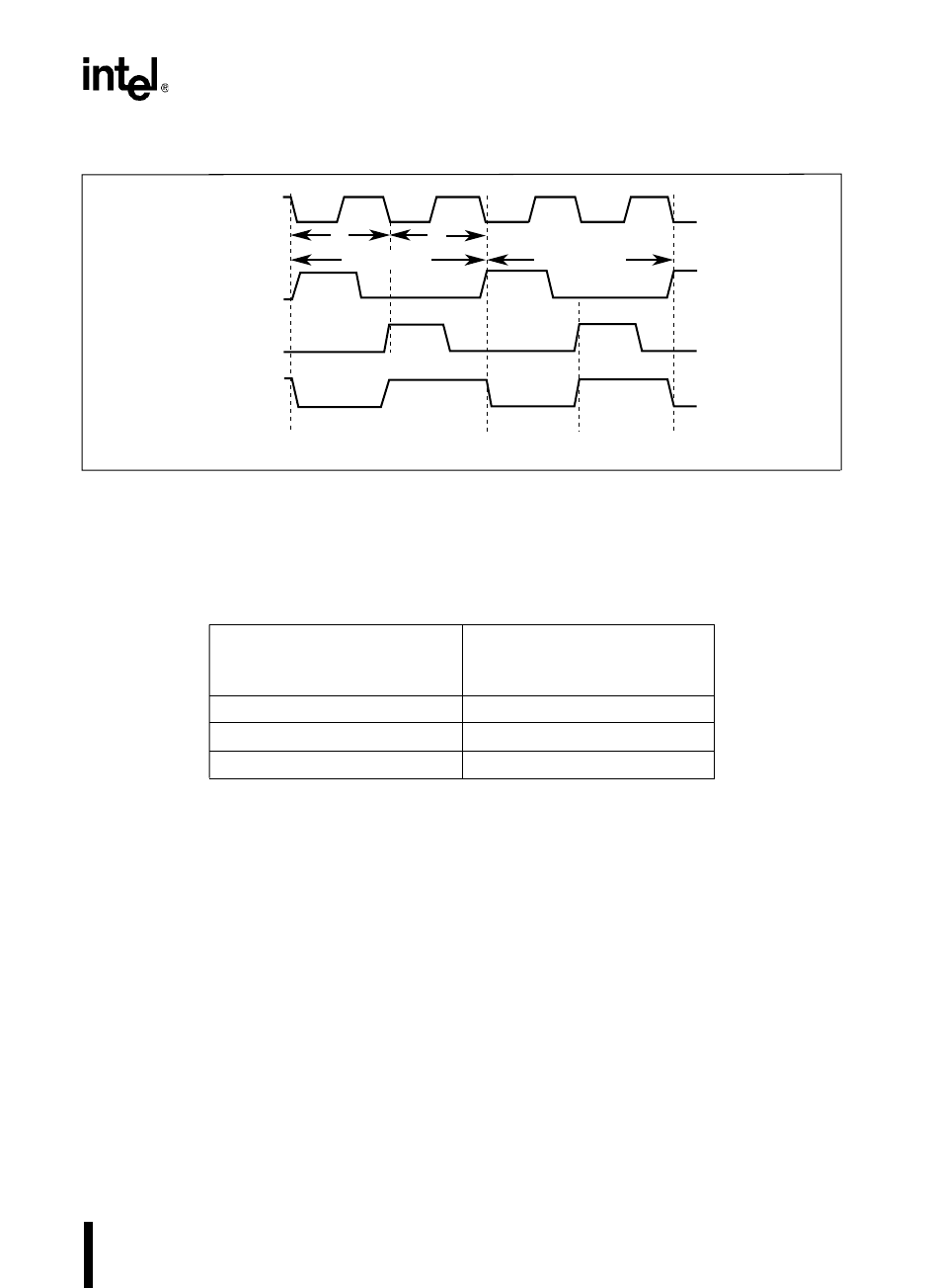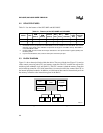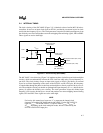
2-9
ARCHITECTURAL OVERVIEW
Figure 2-5. Internal Clock Phases
The combined period of phase 1 and phase 2 of the internal CLKOUT signal defines the basic
time unit known as a state time or state. Table 2-2 lists state time durations at various frequencies.
The following formulas calculate the frequency of PH1 and PH2, the duration of a state time, and
the duration of a clock period (t).
Because the device can operate at many frequencies, this manual defines time requirements (such
as instruction execution times) in terms of state times rather than specific measurements.
Datasheets list AC characteristics in terms of clock periods (t).
For the 80C196NU, Table 2-3 details the relationships between the input frequency (F
XTAL1
), the
configuration of PLLEN1 and PLLEN2, the operating frequency (f), the clock period (t), and
state times. Figure 2-6 illustrates the timing relationships between the input frequency (F
XTAL1
),
the operating frequency (f), and the CLKOUT signal with each of the three valid PLLENx pin
configurations. (Since the maximum operating frequency is 50 MHz, only a 12.5 MHz external
clock frequency allows all three clock modes.)
Table 2-2. State Times at Various Frequencies
f
(Frequency Input to the
Divide-by-two Circuit)
State Time
12.5 MHz 160 ns
25 MHz 80 ns
50 MHz 40 ns
PH1
PH2
CLKOUT
Phase 1 Phase 2
XTAL1
A0805-01
1 State Time
Phase 1 Phase 2
tt
1 State Time
PH1 (in MHz)
f
2
---
PH2== State Time (in µs)
2
f
---
= t
1
f
---
=


















